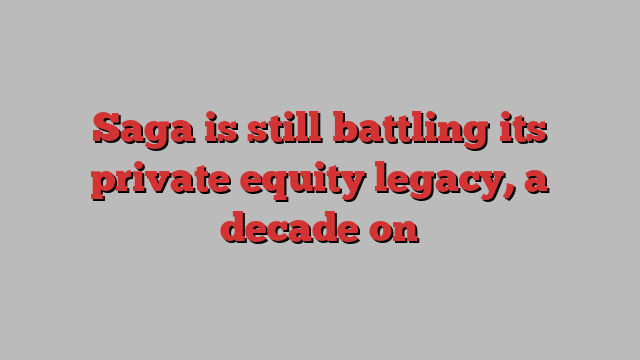
Unlock the Editor’s Digest for free
Roula Khalaf, Editor of the FT, selects her favourite stories in this weekly newsletter.
There is gold in silver. Older Britons are, on average, far richer than younger peers. A famous brand that specialises in the over-50s should have a lot going for it. But the Saga saga makes for sorry reading. Even after the London-listed company’s shares rallied this week after news of talks with Belgian insurer Ageas, they have lost 95 per cent of their value over the past five years.

Some of the misery is down to bad luck. The pandemic hit Saga’s cruise business hard. Some of the pain is self-inflicted. The insurance division introduced three-year fixed-price insurance deals just before a bout of high inflation pummelled its margins.
But the company itself has blamed the legacy of its decade under private equity ownership. That began with Charterhouse’s £1.35bn bid in 2004, which was followed by a 2017 merger with the AA, owned by CVC and Permira, in a £6.2bn deal. (The private equity firms declined to comment). The group was then broken up in 2014 when Saga was floated at an equity value of £2.1bn with net debt that was three times trailing ebitda.
Its net debt to ebitda is now roughly double that. Analysts at Peel Hunt expect a gradual reduction in leverage to three times in the next three years. Profits are likely to improve, though growth is constrained. The cruise business is doing well, but lacks the capacity to be a source of growth. Insurance margins are recovering but regulatory changes have crimped the division’s competitiveness. The business’s weak prospects are reflected in the price-earnings multiple of just 4.5 times.
But there is a looming cash crunch in 2026, when a £250mn corporate bond matures, as well as a facility extended by chair Roger De Haan. That explains why Saga is considering a partnership deal in return for an upfront payment allowing it to pay down some of its debt. It might also have to raise cash from its cruise ships, perhaps by a sale and partnership agreement. There is no guarantee it can pull off any deals. S&P reckons there are still significant risks relating to the capital structure’s sustainability.
It is unlikely a bidder will emerge, though a private equity-backed buyer made an approach that was rejected in 2020. Instead, the business was shored up by a £100mn injection by De Haan, who ran the business for 20 years before selling to Charterhouse in 2004. De Haan, whose father founded the business as the Old People’s Travel Bureau in 1951, won’t want to sell to private equity a second time. Too many of the past decade’s problems can be traced to the debt-fuelled bonanza of the previous one.